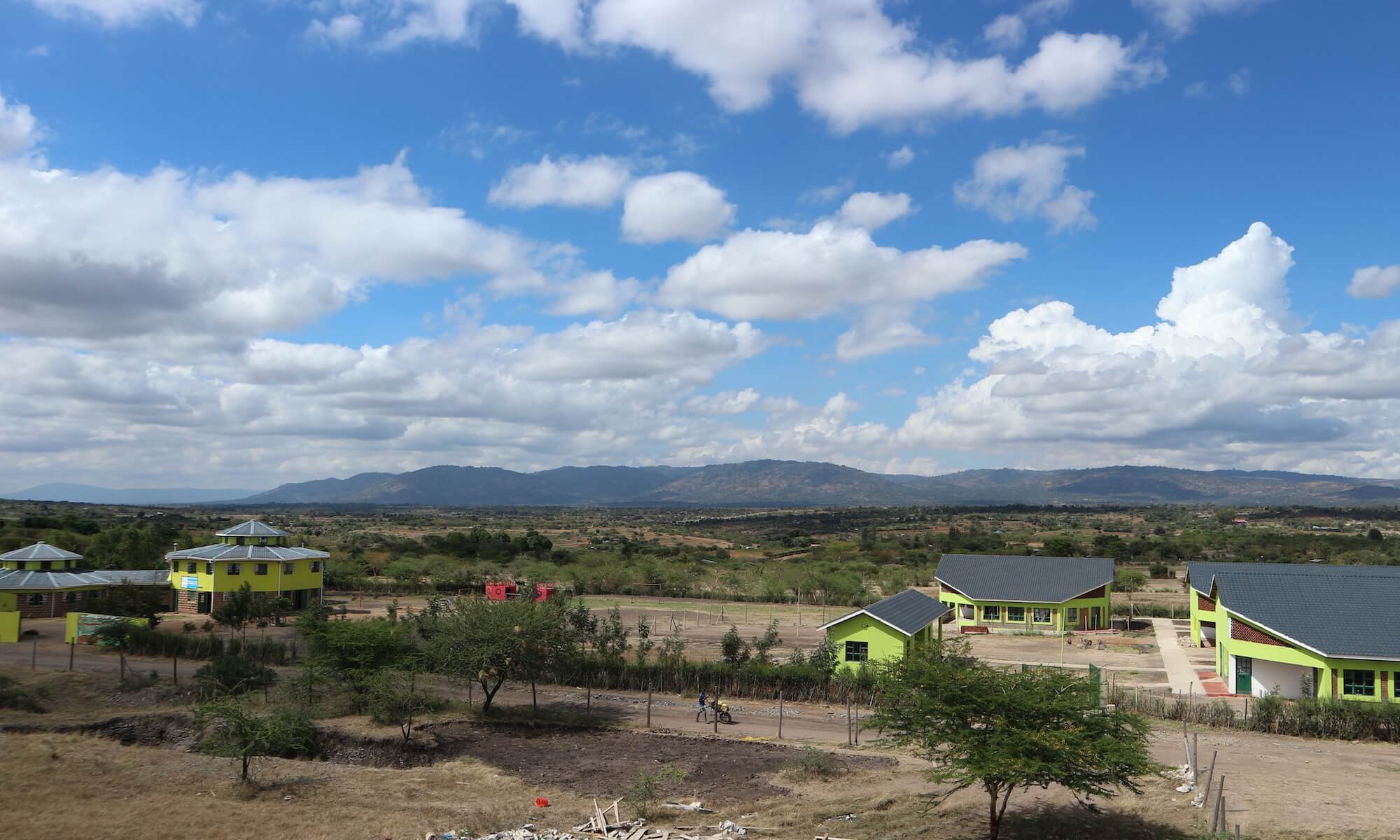News from the Shamba
The temperatures have risen to over 30 degrees since I arrived four weeks ago. It is February 2023 and the last rainy season was much too short. The river near the farm is slowly drying up – but the Shamba is still green! This is partly due to the fact that MCC farmer Boniface diligently irrigates the corn and vegetables. Another reason for this is that the trees planted on the farm provide shading, wind protection and thus also evaporation protection. A great success that could only be achieved through careful planning and maintainance in recent years.
However, the first impression can be deceiving. On closer inspection, it becomes clear that the crop rotation of crops is extremely one-sided. When I arrived, about 60% of the area consists of corn. At least a third of this will bring no or a lower yield.
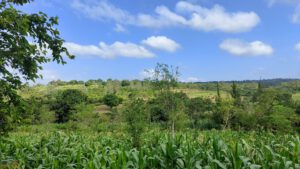
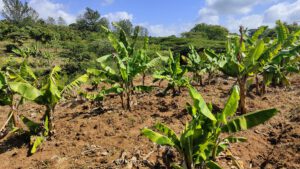
The banana circles, which were created six years ago, are overgrown with weeds. The new area, on which initially only banana trees were planted, is not even half cultivated. The few tomatoes and pepper plants are at the mercy of wind and sun. The preparation of the harvested plots for sowing is very energy-intensive, because the soil has become very hard due to the intensive irrigation with a water hose.
I spent the first few weeks searching for the causes of the current challenges. Today, one month later, there are concrete ideas and solutions.
- More trees, especially on the new part of the Shamba → cooler microclimate
- Renewed focus on crop rotation and purchase of high-quality cattle manure → higher yields
- Manual tillage with animal train → saving energy
- Keep the soil loose so that less water evaporates → save water
In order to put these solutions into practice, a lot has happened recently.
Visiting the World Agroforestry Centre (ICRAF)
On January 13th we visited the World Agroforestry Centre. An organization that is a perfect partner for us with its great expertise in trees of various species. They introduced us to a portfolio of fruit trees designed for Machakos County to ensure a supply of vitamin-rich fruit throughout the year. From this portfolio, we have planted almost a hundred trees at the MCC and the Shamba.
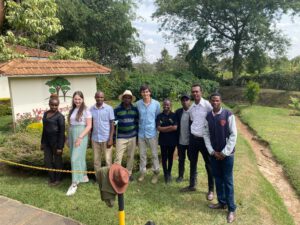
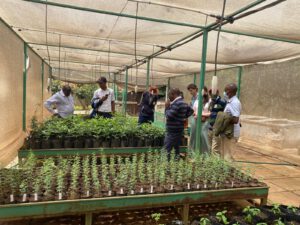
Cattle manure für die Shamba
Since my arrival, I have talked to Boniface and Joseph and Michael about crop rotation and organic fertilizer. We have planned the next crops in such a way that we achieve greater diversity and have fewer problems with pests and diseases. We obtained the cattle manure from cattle farmers in the Mala area, enough to be able to fertilize the area of the Shamba well for 1.5-2 years.
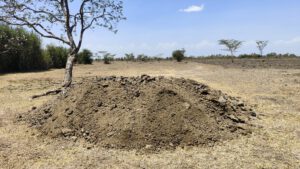
Construction of the dam device
Together with Amos and Joel, the welders on site, we have developed a tool to loosen the soil and form dams. This will allow better storage of water and facilitate the maintenance of crops. First experiments with the cattle were promising.
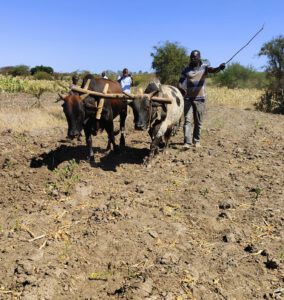
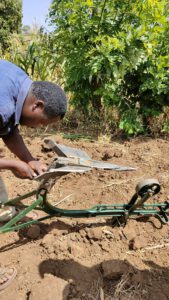
Planting trees
A large part of the acquired fruit trees was planted together with the children in mid-February. Also at the MCC some trees were planted along the football field to provide shade and (as a mirror to the farm) to announce the harvest season for the respective fruits.
The planting holes were filled with fertile red soil and cattle manure and equipped with clay pots for irrigation in the young stage. The cedar pegs were then provided with wire mesh so that the young plants were not eaten by the goats.
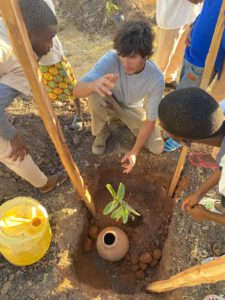
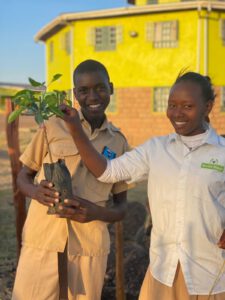
Cooperation with Biovision
During my stay, the exchange with Biovision, an organization that promotes organic farming in Kenya, could finally start after lengthy inquiries from the MCC team. The farm was visited twice, with a few good hints from the consultant. A workshop for the composting and production of ecological “pesticides” could be organized for the village community. We also made a trip to other Shambas cared for by Biovision to promote knowledge sharing and learn from good examples.
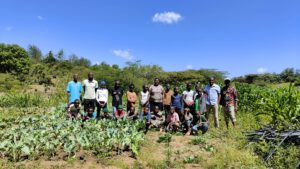
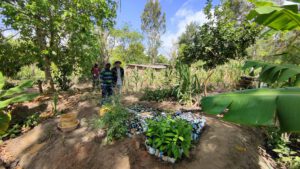
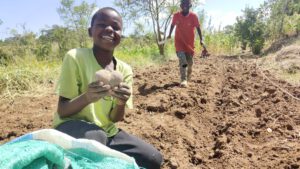
Visit to the Shamba of Wilson (near Kangundo, Machakos County) where we could buy some vegetable seedlings and papaya trees. In an attempt to expand the range of food on the Shamba, potatoes were grown on two small plots.
